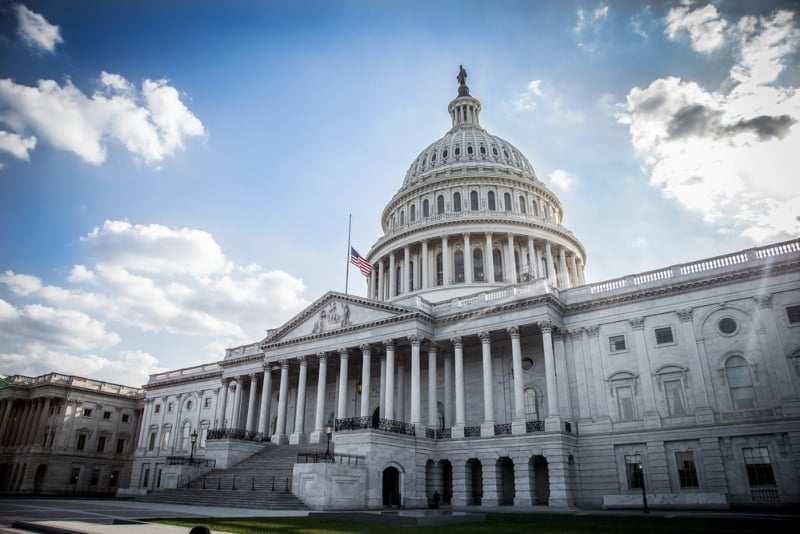70 per cent likely to leave if Bureau of Labor Statistics moves out of Washington

Is it a House oversight committee? A Democratic think tank? No, it’s the gold standard of research and impartiality on U.S. inflation, employment and productivity: The U.S. Bureau of Labor Statistics.
Now 70 per cent of the bureau’s staff of 1,800 is likely to leave by 2022, according to a survey by the union that represents most of its workers. The reason: The administration plans to move the bureau’s current headquarters from Washington, near the Union Station transit hub, to an office complex in Suitland, Maryland.
Current and former government employees said they’re concerned the administration is seeking to drive out civil servants whose work could undermine the president’s agenda. These researchers are in a position to document, for example, a slowdown in manufacturing employment in part because of Trump’s tariffs.
Ninety per cent of the bureau’s employees oppose the move because traffic and lack of transit options would add on average an hour to their daily commutes — in some cases, as much as two hours — even though the new office is only seven miles away and near a subway station. They also worry it will isolate them from Capitol Hill policy makers and that the new digs are too small to fit the staff.
The White House has said it is promoting efficiency by consolidating three agencies. The Bureau of Labor Statistics, or BLS, now part of the Labor Department, will join the Census Bureau and the Bureau of Economic Analysis in a single, lower-cost location. The Obama administration had also indicated an interest in consolidating these agencies, though it never happened.
Trump’s “phony” comment and the critical words of Mulvaney and Kudlow all referred to BLS jobs reports. During the Obama administration, Trump said they overstated the health of hiring.
“So far, the BLS has avoided politicization from the Trump Administration,” said Michael Havlin, an economist at the agency and union member. “But the economic data has been pretty positive the last three or four years — that might not be the case in a year or so.”
The BLS move joins a series of initiatives that would uproot federal bureaucracies from Washington. The Agriculture Department, for example, is moving the Economic Research Service, which produces widely watched reports on farming, to the Kansas City area.
In that case, only about 70 of roughly 250 workers are expected to stay with the service. That exodus raised similar questions about whether officials were seeking to gut an agency that had produced reports angering the administration -- something the government denied.
Also sparking concern about employee attrition, the Bureau of Land Management, responsible for 10 per cent of the nation's land and about one-third of its resources, is scattering staff positions from Washington across several locations in the western U.S. The bureau said the move is intended to reduce costs and bring employees closer to the lands it manages.
“It’s a reasonable thing for members of the civil service here to feel like the real motive is an attack on expertise, because we’re seeing that across the administration,” said Jeff Hauser, executive director of the Revolving Door Project, which examines executive branch appointments. “A lot of pressure is going on experts to conform their opinions to political appointees.”
Agency relocations under previous administrations have also caused headaches for workers. But attrition rates were much lower than those now being forecast.
The Bureau of Economic Analysis, the agency that releases the quarterly gross domestic product data among other reports, moved from Washington to the Maryland building under Obama. A quarter of the staff left.
The Bureau of Labor Statistics has a rich history. It dates to 1884, when it was established under the administration of President Chester Arthur. From the beginning, impartiality was a concern because of fear it would be beholden to the labor movement.
Its first commissioner said the bureau's mandate was “the fearless publication of the facts.”
Today, Fed officials, investors and researchers seeking to understand the health of the world’s largest economy still depend on BLS data. The monthly jobs market report for September documented a 50-year-low unemployment rate but a slower pace of wage gains.
“The data are essential,” said Daniel Sichel, a Wellesley College economics professor who worked at the Federal Reserve and Treasury Department and has relied on the information for more than three decades.
Erica Groshen, BLS commissioner under Obama, said she isn’t opposed to streamlining, just any approach that leads to mass departures.
“This could be very disruptive,” Groshen said. “There is a lot of expertise that is embedded in this staff, and the data they produce is really important, so this is something that would need to be handled carefully.”




